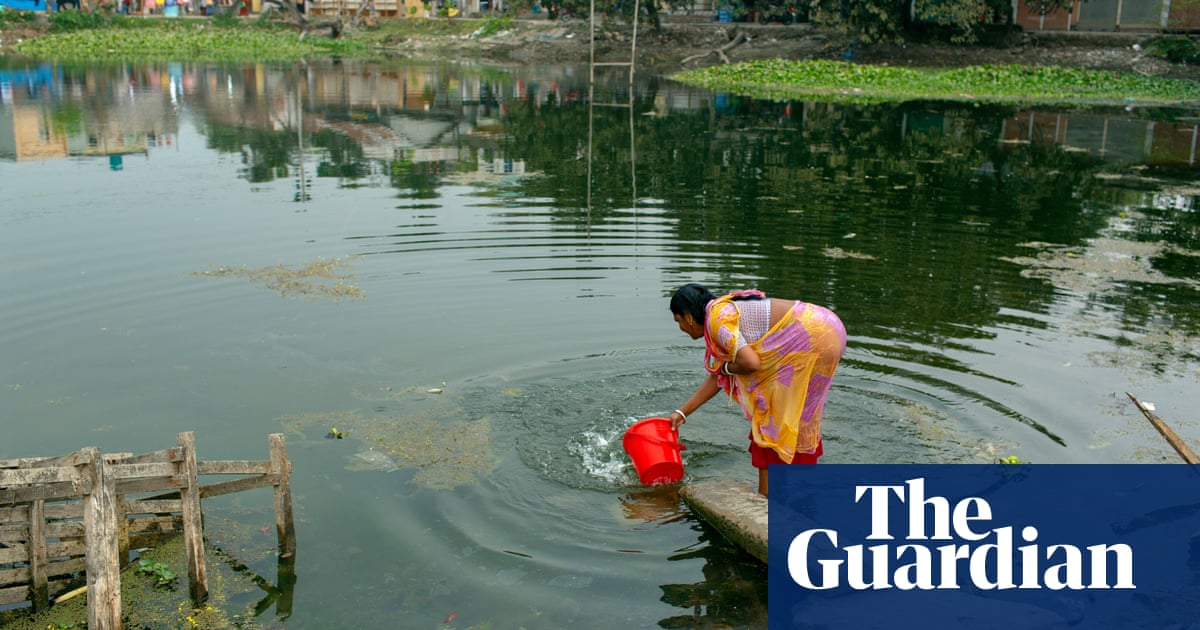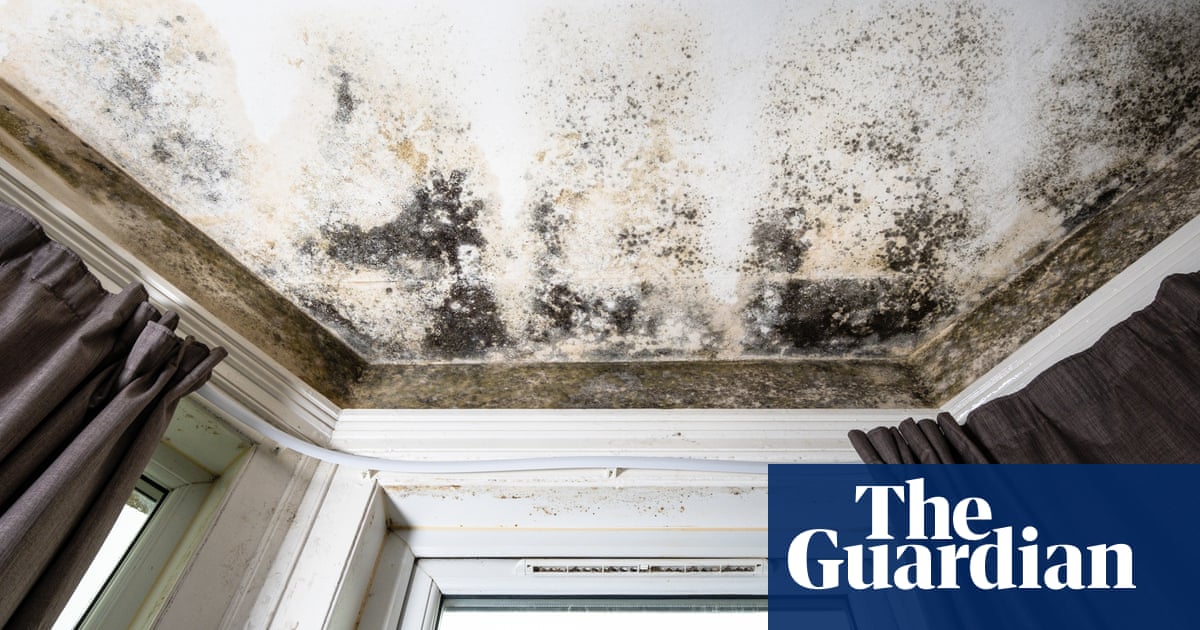
In the small, crowded ward of the Upazila Health Complex in Dacope, new and expecting mothers lie exhausted beneath fans that spin noisily above their heads. There are no dividers in the maternity room shared by more than 20 women, so visiting husbands are ushered out by nurses when someone needs attending to.
Propped up on one of the beds is Sapriya Rai, 23, due any day. “My first pregnancy was difficult, the baby was born two months premature, so I’ve been worried throughout this one,” says Rai. “I have high blood pressure and the doctor found protein in my urine so now I’m being closely monitored. I may need to be induced or have a caesarean.”
Rai has pre-eclampsia, a condition that affects some women during the second half of pregnancy or soon after their baby is delivered. Diagnosed women are monitored until delivery is possible. This is normally about 37 to 38 weeks of pregnancy, earlier in more severe cases.
Rai is not unusual. Alarming numbers of pregnant women in the coastal district of Dacope, in south-west Bangladesh, have been diagnosed with pre-eclampsia, eclampsia and hypertension. Scientists believe it is linked to rising salinity in drinking water.
“High blood pressure is among the leading causes of maternal death in developing countries,” says Aneire Khan, a researcher in environmental epidemiology, who in 2008 carried out the first research into the correlation between high blood pressure-related conditions among pregnant women and salt intake from drinking water sources. “It also makes pregnant women particularly vulnerable to pre-eclampsia, which can lead to severe headaches, organ damage and even death.”
Khan conducted a second study in 2011 with Imperial College London and the Bangladesh Centre for Advanced Studies, which found the salt intake among women in Dacope was well above the World Health Organization’s recommended levels. It confirmed a strong relationship between salt intake and the risk of developing pre-eclampsia and hypertension.
Dacope has long been on the frontline of the climate crisis. The rural population relies on rivers, ponds and groundwater for cooking, drinking and bathing. But these natural water sources have been contaminated by varying degrees of salinity due to saltwater intrusion from cyclones and rising sea levels.
“When Cyclone Aila hit in 2009, it left behind a trail of destruction, breaching embankments and leaving the entire region submerged in salt water,” says Dr Santosh Kumar, a gynaecologist at the hospital. “With most freshwater infrastructure destroyed, the coastal region has been facing an acute drinking water crisis. The extent of the impact on people’s health is only now being realised.”
As a result of Khan’s research, several initiatives were undertaken by NGOs and the Bangladesh government to reduce salinity in Dacope’s waters, including reverse osmosis, rainwater harvesting and managed aquifer recharge; a technique which collects and treats water from ponds and rooftops and injects it underground for storage and future use.
In 2019, Khan returned to Dacope to see if these interventions had worked. She interviewed 740 women and checked to see if blood pressure levels among the local population were still as high. But due to Covid restrictions, she was unable to complete her analysis. Khan is now planning a new study with Imperial College London to assess whether the interventions have had a positive health impact on the community.
Meanwhile in Dacope, Kumar worries the situation is getting worse. “Climate change and rising sea levels will further exacerbate salinity issues here in the future,” he warns. “All the women and girls in the area are at threat. Without easy access to safe drinking water, their reproductive health will deteriorate.”
Barrels and buckets of water outside a terrecotta house
View image in fullscreen
Fresh water is stored in a family’s back yard for daily use
Nirmalya Sarker, 56, has been a health worker for more than 20 years. Every day she travels to villages around Dacope, going from door to door, to speak to families about the importance of clean drinking water. “Despite the high incidence of related health concerns, most people here are unaware of the increasing salinity and its implications,” she says.
Sarker is working with more than 5,000 pregnant women in Dacope; she visits them regularly to do check-ups and holds information sessions at the Upazila Health Complex, where women and girls can drop in to discuss any issues they might be experiencing.
“The main issue is a lack of awareness,” says Sarkar, who has been working with the Bangladesh health ministry to create information that can be easily distributed among villages. “Awareness building on proper pregnancy care and safe drinking water practices will enable better health and dietary choices to directly improve maternal health.”
Pre-eclampsia also affects the unborn baby, who is at risk of dying in the womb, being born underweight or small in size due to a lack of nutrition to the developing foetus. Children affected by early malnutrition have less immunity against diseases and are prone to respiratory tract infections, pneumonia and other health problems.
In the busy bazaar outside the hospital, a group of men arrive on tricycles with wooden carts filled with empty barrels and containers. A number of shops here sell clean, filtered water by the gallon.
Some families take out loans to buy filtered water or large tanks. Rainwater can be harvested during monsoon season but households require a tank to store it. This is not possible for many families in Dacope, who live in houses with straw roofs, which can’t hold the tanks. The Bangladesh government has installed tanks on school roofs and other buildings but people still have to travel and queue to get water.
An often-overlooked effect of salinity intrusion is on the menstrual health and hygiene of women and adolescent girls, a problem that intensifies wider social insecurities.
Shopna Dhali, 36, can’t afford to buy sanitary pads for her teenage daughter so when she gets her period, she uses old rags which are washed using saline water and reused. Research suggests such practices can leave women and adolescent girls exposed to various hygiene risks, such as rashes, skin diseases and uterine infections.
Mukhti Shanker, 25, used to drink groundwater from a tube well regularly before she had her baby. Despite having the highest water sodium level, tube wells are the most common source of drinking water in Dacope, highlighting an urgent need to promote alternative sources. Khan’s study showed that women who drank tube well water had significantly higher average urinary sodium levels than those who drank rainwater.
During her pregnancy, Shanker had no idea of the impact water salinity could have on her pregnancy. “When they told me I needed to be closely monitored, I became worried,” says Shanker, whose hands, feet, and face became swollen while pregnant. After delivering a healthy baby girl, she vowed never to drink saline water again.
As the sun sets on Dacope, Shanker walks around the pond in front of her house, with 10-month-old Abonika on her hip. About 6,000 people use this communal pond every day. Women climb down steep, muddy stairs to collect pond water; moving aside dirt and floating leaves with their hands before dipping their pitchers into the water and filling them to the brim.
The women carry the heavy pitchers against their waist or on their heads and walk home slowly, careful not to spill any. Most of them perform this arduous task every day, simply to fetch water for their families.
“It’s a tragedy that these difficulties still persist,” says Kumar. “Access to clean and safe water is a basic human right – no one should have to risk their health by drinking salty water.”
Yet with Bangladesh reaching the limit of its ability to adapt to climate breakdown, the water crisis in Dacope may worsen.
“We can’t fight nature,” says Kumar, “so we must find alternative, more sustainable ways to survive.”












